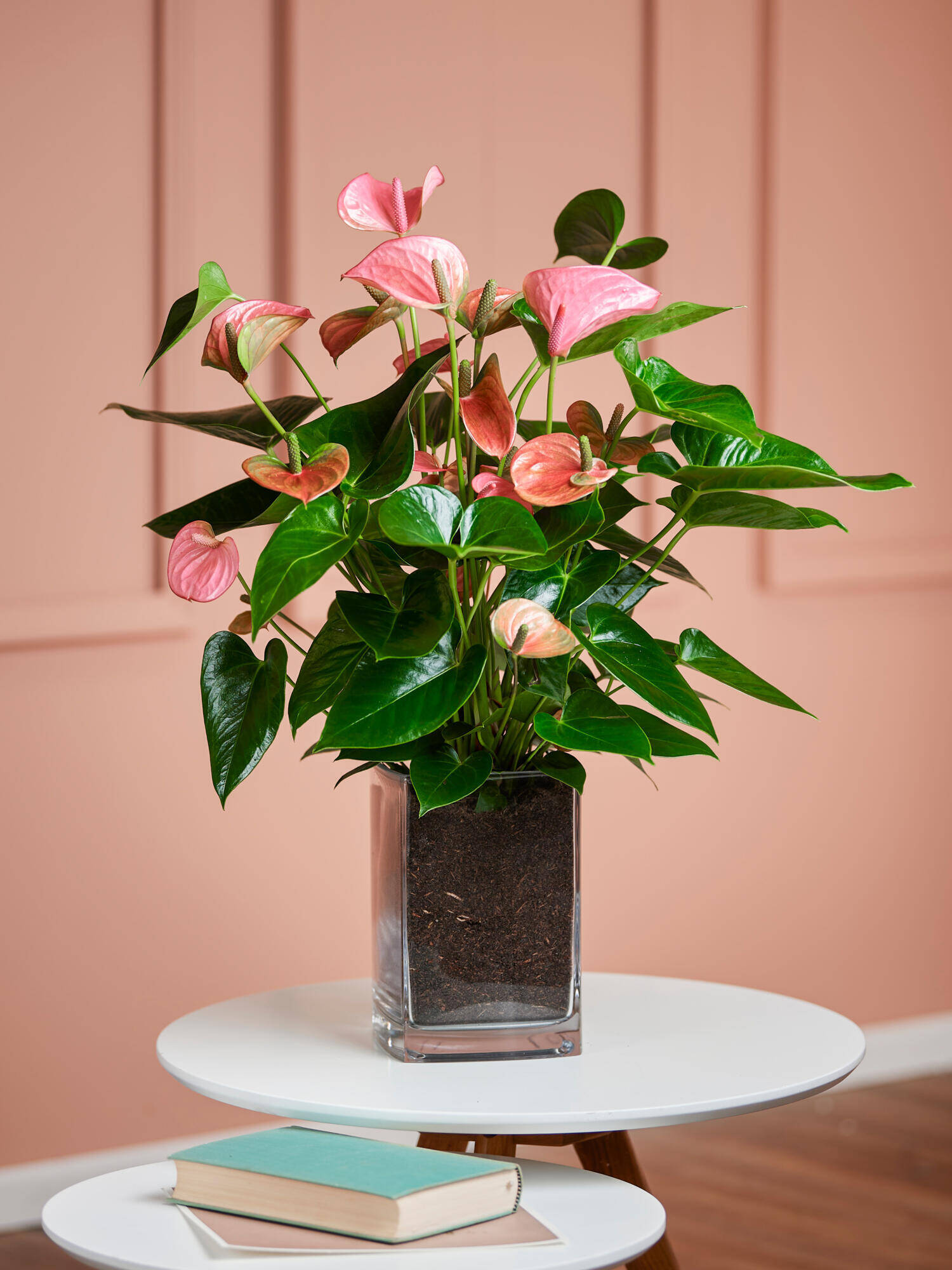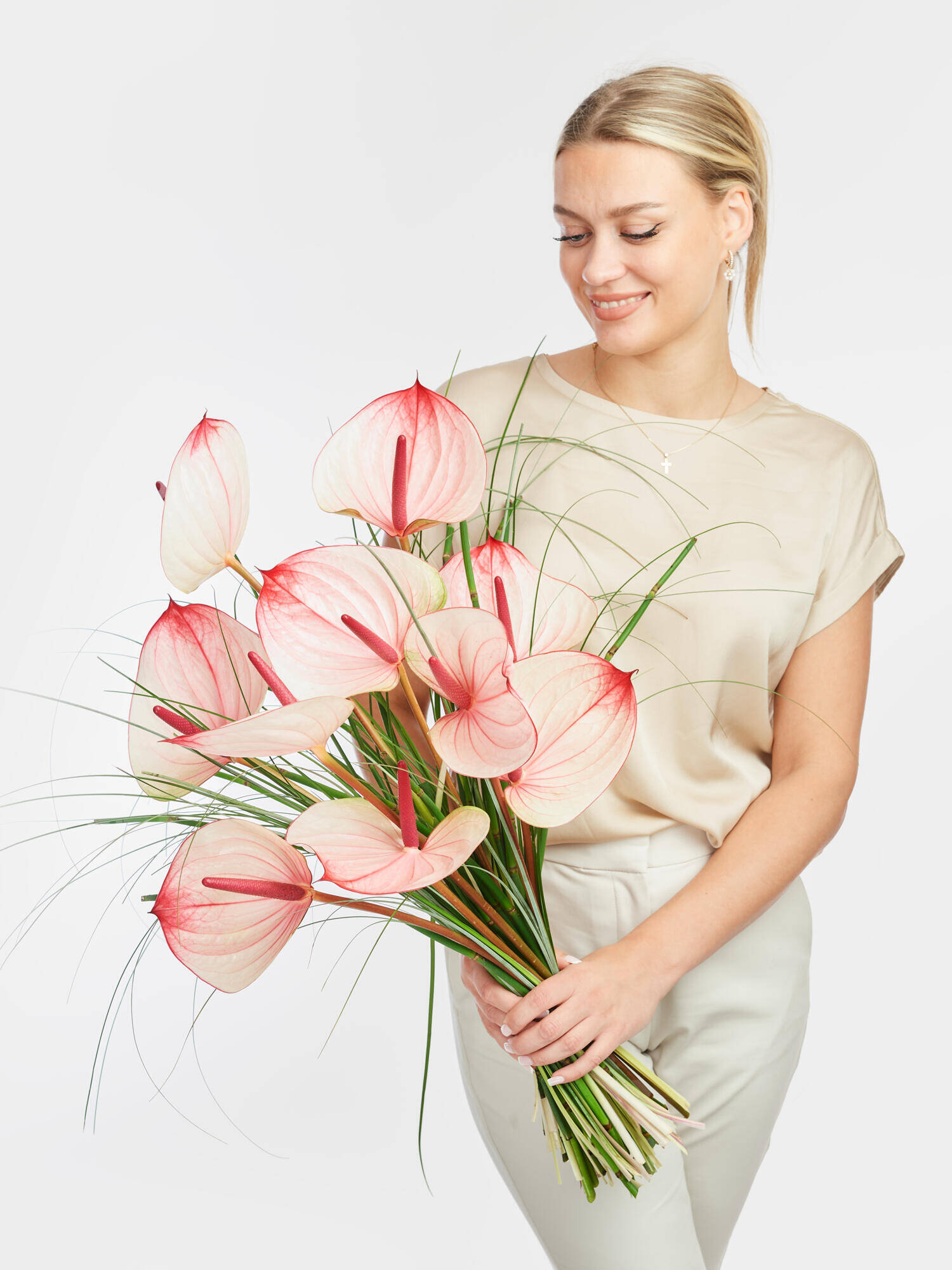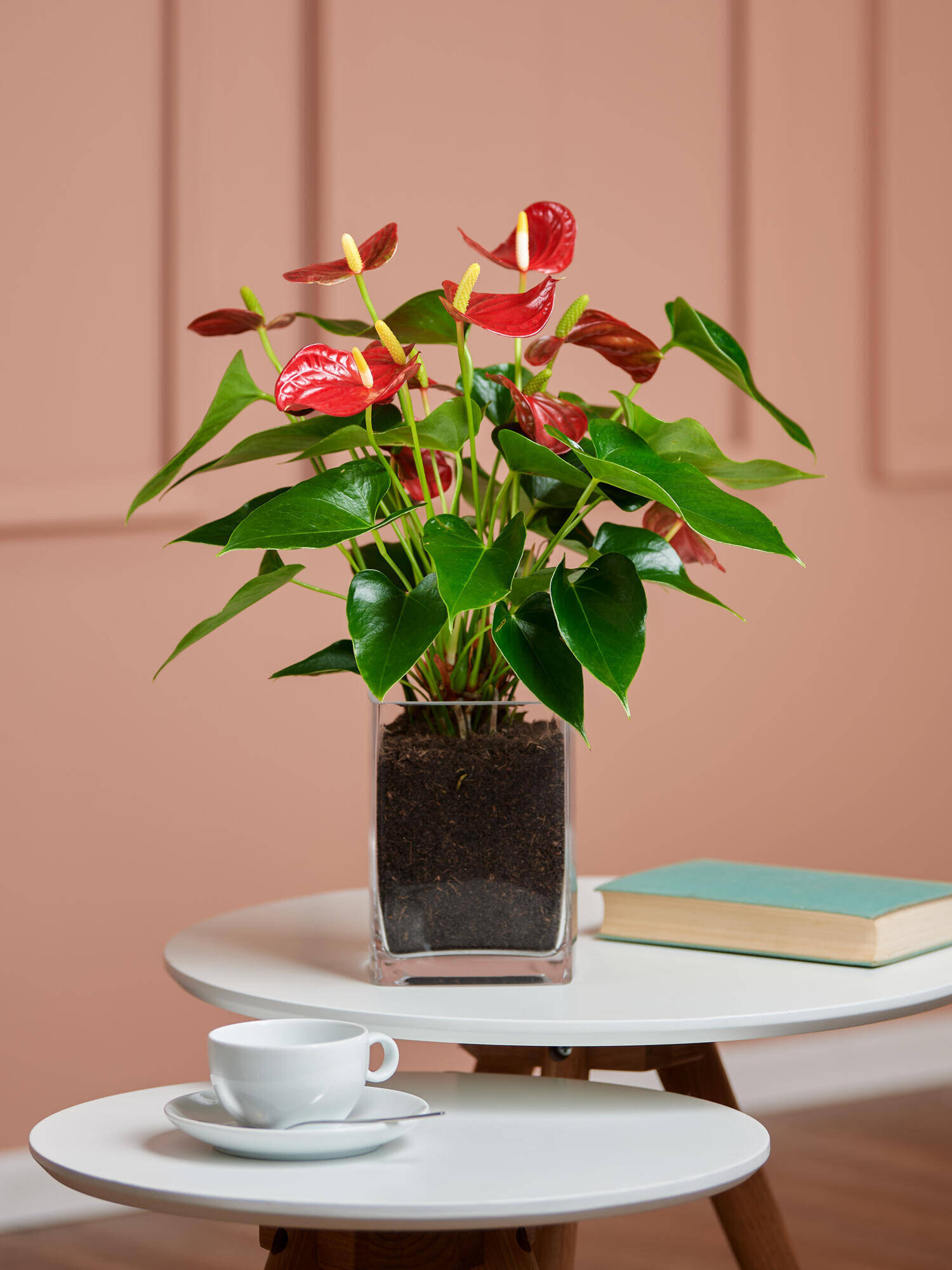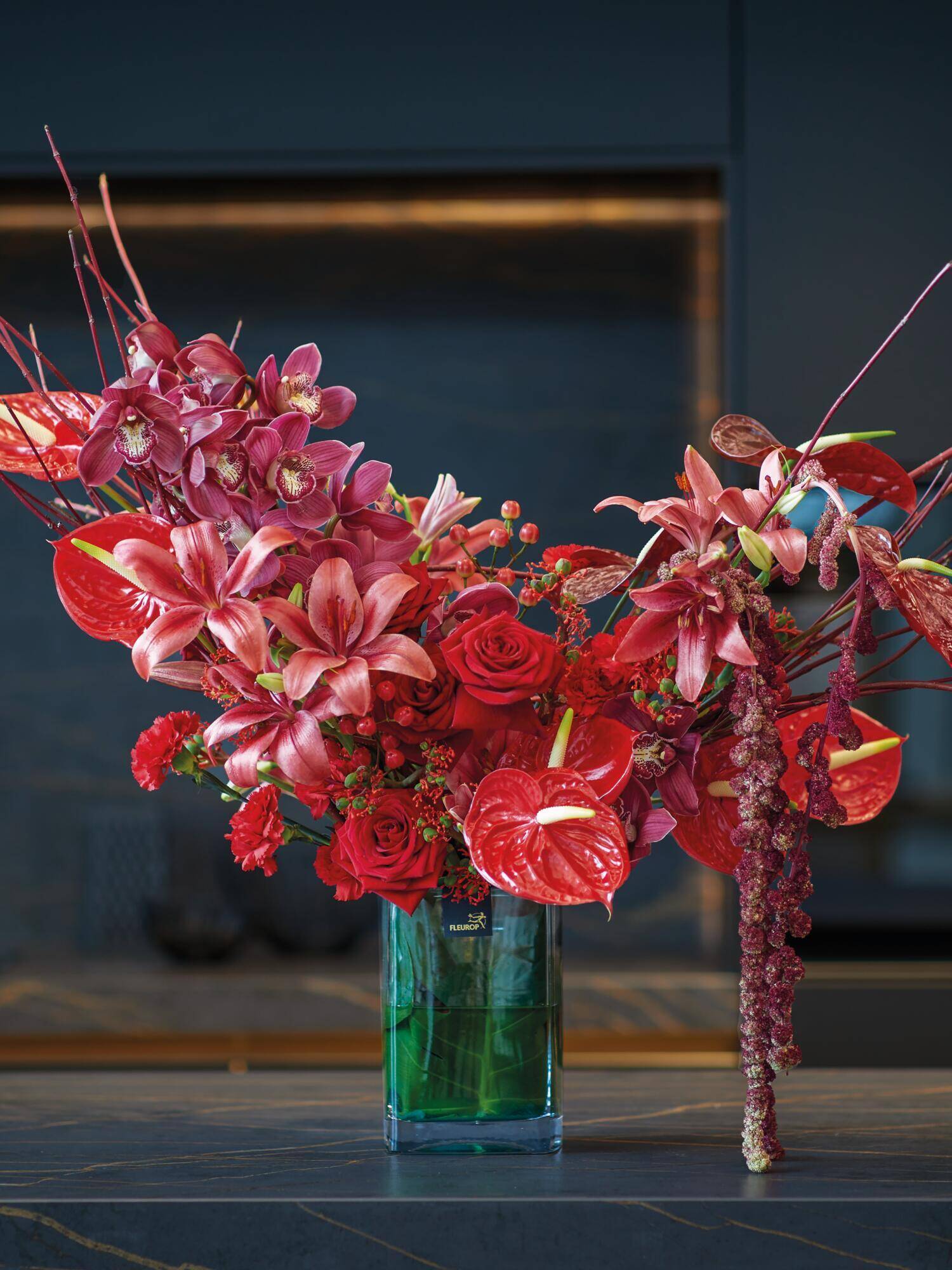Anthurium Care: Tips for Flamingo Flower

The flamingo flower, botanically Anthurium, belongs to the arum family (Araceae) and owes its German name to its bright bracts, which are usually red, but can also be pink, pink or white. Anthuriums are evergreen and perennial. In their native South America, they are mostly found growing epiphytically (epiphytic plants). It is very popular here as a tropical houseplant and flowers almost all year round, even without intensive care. Below you can find out everything from flamingo flower care to the best flamingo flower location and everything else you should know so that you can enjoy it for a long time.
The most important facts about the plant family
The native habitat of this plant from the arum family is tropical regions. This already indicates that the flamingo flower prefers warmer temperatures, slightly more humidity and brighter locations.
Botanical name
The flamingo flower is botanically called Anthurium and belongs to the Araceaea family, the arum family. Anthuriums are the most species-rich genus in the arum family.
Origin
Anthuriums originate from the rainforests of South Africa.
Appearance
This popular pot plant has large, heart-shaped leaves and cuts a decorative figure with its height of around 40 to 50 cm. However, it also flowers very regularly in our homes and forms heart-shaped bracts (spatha). The actual flower is a straight or curved spadix in the centre of the bracts, which can usually be yellow, orange or red.
Flowers: flowering time, colour & shape
Anthurium scherzerianum hybrids flower from May to June. Anthurium andraeanum hybrids flower very persistently for around 300 days a year. Anthuriums form heart-shaped bracts (spatha). The actual flower is a straight or curved spadix in the centre of the bracts, which can usually be yellow, orange or red. The bracts have a wide range of colours, from white, orange, pink, red to pink or green, depending on the variety.














